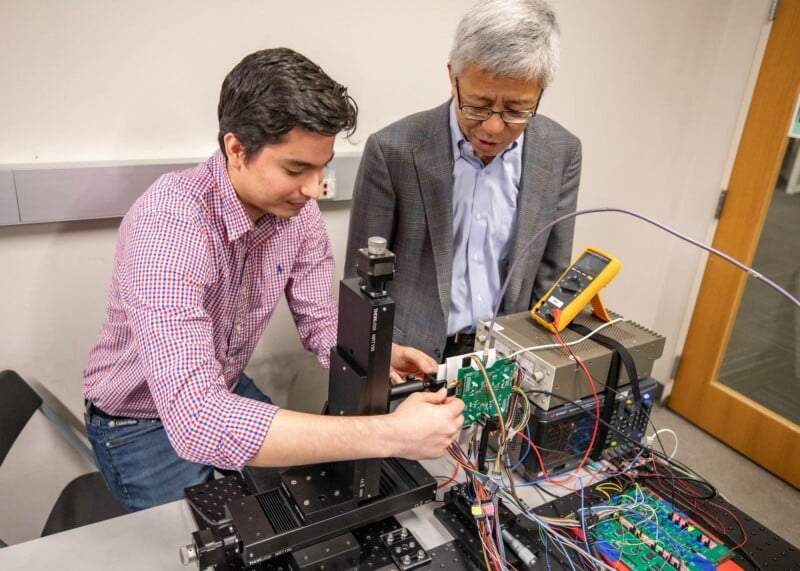This X-Ray Chip Lets Smartphones See Through Walls ‘Like Superman’

Researchers have developed an imaging chip inspired by Superman’s X-ray Vision that lets smartphones see objects through walls.
Engineers from The University of Texas at Dallas, Texas, and Seoul National University in Seoul, South Korea, have designed a compact chip that uses high-frequency radio waves to “see” through objects.

In a study published in IEEE Transactions on Terahertz Science and Technology earlier this year, the researchers revealed that the compact experimental chip has a selection of three sensor pixels that emit and receive high-frequency radio signals in the millimeter-wave (mmWave) band of the electromagnetic spectrum.
Signals reflected from the target object are then amplified and mixed by onboard components, enabling outlines of the object to be viewed on a display.
In tests, the chip could detect an object behind cardboard at a distance of around 0.39 inches.

According to the team of engineers, the technology could equip future smartphone devices so that they can detect studs, wooden beams or wiring behind walls, cracks in pipes, or outlines of contents in envelopes and packages.
‘This Tech is Like Superman’s X-Ray Vision’
In a press release published by The University of Texas at Dallas, the researchers say they have been working on making the technology small enough for handheld mobile devices while improving image quality.
“We designed the chip without lenses or optics so that it could fit into a mobile device. The pixels, which create images by detecting signals reflected from a target object, have the shape of a 0.5-mm square, about the size of a grain of sand,” Wooyeol Choi, co-author of the paper and assistant professor of electrical engineering at Seoul National University, says in the statement.
“This technology is like Superman’s X-ray vision. Of course, we use signals at 200 gigahertz to 400 gigahertz instead of X-rays, which can be harmful,” Dr. Kenneth K. O, director of the Texas Analog Center of Excellence (TxACE) and the Texas Instruments Distinguished University Chair in the Erik Jonsson School of Engineering and Computer Science, adds.
Instead, the imager chip emits 300-GHz signals in the millimeter-wave band of electromagnetic frequencies between microwave and infrared, which the human eye cannot see and is considered safe for humans. A similar technology, using microwaves, is used in large, stationary passenger screeners in airports.
With privacy issues in mind, the researchers designed the technology for use only at close range, about 1 inch from an object. For example, if a thief tried to scan the contents of someone’s bag, the thief would need to be so close that the person would be aware of what they were doing.
The next iteration of the imager chip should be able to capture images up to 5 inches away and make it easier to see smaller objects. The researchers also believe the new imaging technology could be used in the medical and healthcare field.
Image credits: All photos via The University of Texas at Dallas.